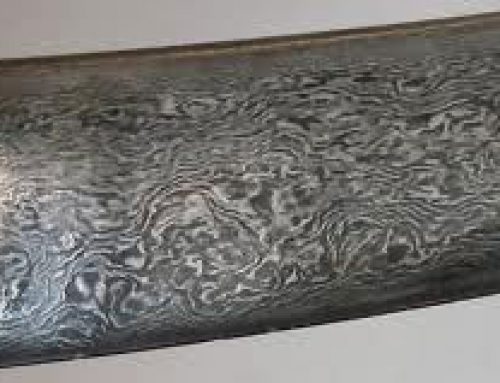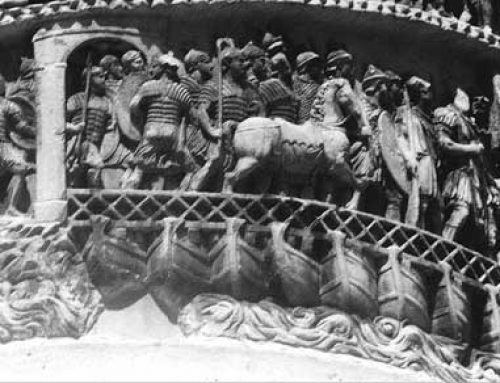
A Roman carving of a midwife at a birth (Isola Della Sacra, Ostia, 1st century AD)
Who delivered babies in the ancient world?
A midwife is a woman who helps other women give birth to their babies. In ancient and medieval times, doctors didn’t usually have anything to do with women having babies – that was the job of midwives. Most midwives had a lot of experience and knew how to deliver babies.
Doctors in ancient Egypt
Doctors in ancient India
Women in ancient Mesopotamia
Midwifery as a business
Midwives gave advice to women in labor, and helped the baby to be born. They also knew the right sacrifices to make and what prayers to say for a safe delivery.
What is animal sacrifice?
Sacrifice in Roman religion
Families paid the midwife, first in food or cloth or beads, and later in money. Being a midwife was a good way for a woman to support herself. Midwives ran their own business, and it usually paid pretty well. On a larger farm, where there were many people working, the farm might hold an enslaved midwife.
Women’s work in ancient Rome

Midwives help a woman deliver the placenta (Roman Ostia)
What did midwives know how to do?
Midwives helped women get through their pregnancy safely. They could tell whether you were really pregnant, and they knew when the baby was about to be born.
Some midwives used a special chair for the mother to sit in. Other women gave birth lying down on a bed or a couch. Midwives knew how to deliver a baby as safely as possible.
Furniture in ancient Egypt
But that wasn’t very safe! Even the best midwives in both ancient and medieval times didn’t know a lot of things we know today. They didn’t know about germs, so they didn’t always wash their hands before taking care of women. They didn’t know how to do a Caesarian section without killing the mother from shock. If the mother had already died in childbirth, or was about to die, they could cut open her stomach and save the baby. (Interestingly, they could do Caesarian sections on cows and sheep, because even without anaesthesia the cows and sheep could survive the operation without dying of shock.)
More about germs
By the Early Medieval period, there were procedures for doing emergency abortions if the baby had died inside the mother, to save the mother’s life, but we don’t know whether midwives could do this operation or only doctors.

Childbirth on Cyprus, about 500 BC
Dying in childbirth

A Roman woman giving birth with the help of a midwife.
Many babies died while they were being born, and many women also died or were injured while they were having their babies, even if they had a good midwife. About one out of five women who were having a baby died. (These days, with modern midwives and hospitals, women die much less often, though women are still often injured in childbirth.)
Why do women still die in childbirth?
Wet nurses
If a woman did die in childbirth, or if she didn’t have any milk, the midwife might also help to find a wet nurse for the baby. A wet nurse was a woman who breast-fed another woman’s baby.
What is a wet nurse?
More about infanticide
More about life expectancy
Egyptian medicine
Roman medicine
Bibliography and further reading about midwives:





this was sooooooo werid idk if i can read the rest
this was cool and awesome thank you for this
hell yea finna beat wait wat
the pictures are very concerning…..
I’m sorry you find these disturbing. They’re not violent or anything? It might help to remember that these aren’t photographs, only sculptures.
im reading this at school right now and i feel weird reading this not sure if its just me
Remember, these aren’t photographs of women. They’re just bits of clay and stone, molded to look like women.
live your life and let them grow
this wa very interesting
i think these picture are educational and very good for our mental education,like now men know how it looks like when women give birth-
Well, these are artistic representations, not really photographs! But I think it’s at least as important for girls to know what it looks like for women to give birth as it is for men to know!
This was very interesting!
?ok educational but awkward
how do you stop your big boy son stop growing up so he can live happy they need to stay yong for ever
Oh, let them grow up! (You can’t stop them anyway). Maybe soon you will have grandchildren to hold.
awesomeeeeeeeeeeeeeeeeeeeeeeeeeeeeeeeeeeeeeeeeeeeeeeeeeeeeeeeeeeeeeeeeeeeeeeeeeeeeeeeeeeeeeeeeeeeeeeeeeeeeeeeeeeeeeeeeeeeeeeeeeeeeeeeeeeeeeeeeeeeeeeeeeeeeeeeeeeeeeeeeeeeeeeeeeeeeeeeeeeeeeeeeeeeeeeeeeeeeeeeeeeeeeeeeeeeeeeeeeeeeeeeeeeeeeeeeeeeeeeeeeeeeeeeeeeeeeeeeeeeeeeeeeeeeeeeeeeeeeeeeeeeeeeeeeeeeeeeeeeeeeeeeeeeeeeeeeeeeeeeeeeeeeeeeeeeeeeeeeeeeeeeeeeeeeeeeeeeeeeeeeeeeeeeeeeeeeeeeeeeeeeeeeeeeeeeeeeeeeeeeeeeeeeeeeeeeeeeeeeeeeeeeeeeeeeeeeeeeeeee
Ive been scared because of this anyone who sees this a school i sugest you dont look at these with a dirty mind trust me
Women’s bodies aren’t scary, they’re just human parts. A normal part of life.
I-i-i-i-i-i- [redacted]
I’m tryna link drop ur @‘s :0
Awesome for school!
I’m Kinda concerned about the pictures….. that just…..
theres nothing wrong with it, its showing child birth
Reading it online from home be like………………………………………………………………………….
I like it I guess
byeeeeeeeeeeeeeeeeeeeeeeeeeeeeeeeeeeeeeeeeeeeeeeeeeeeeeeeeeeeeeeeeeeeeeeeeeeeeeeeeeeeeeeeeeeeeeeeeeeeeeeeeeeeeeeeeeeeeeeeeeeeeeeeeeeeeeeeeeeeeeeeeeeeeeeeeeeeeeeeeeeeeeeeeeeeeeeeeeeeeeeeeeeeeeeeeeeeeeeeeeeeeeeeeeeeeeeeeeeeeeeeeeeeeeeeeeeeeeeeeeeee!!!!!!!!!!!!!!!!!!!!!!!!!!!!!!!!!!!!!!!!!!!!!!!!!!!!!!!!!!!!!!!!!!!!!!!!!!!!!!!!!!!!!!!!!!!!!!!!!!!!!!!!
these commets were funny
This is a very interesting article I learn that some women died during labor or even babies could die. I also learn the in that time doctors did not deliver babies only midwives and that sometimes the midwives didn’t wash their hands before helping a mother to deliver a baby.
I’m glad you liked it, Noe!
– uhhhh….
LOLLL idk why this was so funny to me im reading this right now at school LOL
what the heck
THIS IS CRAZY!!!!!!! THE PICS!!!! :()
Midwives helped women get through their pregnancy safely. They could tell whether you were really pregnant, and they knew when the baby was about to be born.
THIS IS GREAT INFORMATION
y dough pics doe
This was pretty weird, to read at school
Remember these are not photographs of women, just stone carved to look like women.
Thanks comrade
WHY!!!!!!!!!!!! WOULD YOU HAVE THIS ARTICLE!!!!!!!!!!!!!
You know you were born exactly this same way, right?
Perfect! Thanks peeps.
not for peploe how at school
Sorry you were shocked! But this is education, not sexy stuff. And these are statues, not photographs of real women.
This is a great history
Thanks!
I loved this article!
Thank you! Glad we could help!